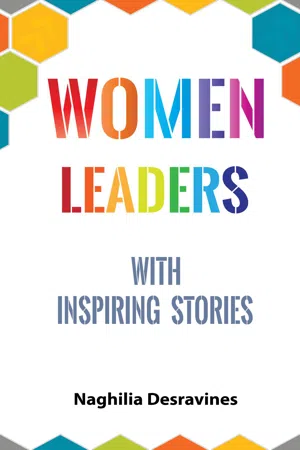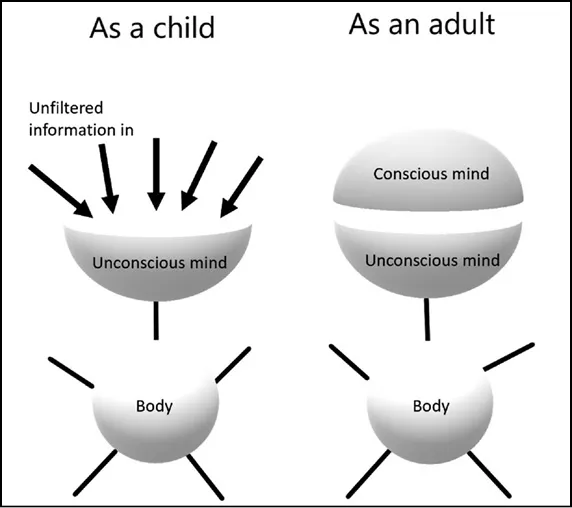![]()
Chapter 4
“Mental Health” is NOT a Dirty word. Are you doing what is needed to create a good mental health environment as a Leader?
Maggie Georgopoulos
Whether you are a leader who, at some stage, may suffer from mental health issues, or one of the few who have never experienced a period of poor mental health, it is important to create an environment that’s friendly toward those who may be dealing with mental health issues regardless of whether these are short or long term.
One of the biggest workplace problems is stress. Stress is not a mental health condition; however, it does have the potential to contribute to a mental health condition if it is at a high level over a prolonged period of time. This can be caused by working conditions, how people treat you, or even your own perceptions of what you should be doing. Women, in their effort to be “superwomen” and fit to a perception of what modern society wants from them, tend to be more affected than men.
In the United Kingdom, according to the National Health Service, 1 in 4 women will have depression as opposed to 1 in 10 men. Additionally, in the UK 29% of women report a major mental health issue compared to 17% of men. Women are twice as likely as men to experience some kind of anxiety disorder. According to the Australian Bureau of Statistics, 22% of women are likely to experience a mental health issue for 12 months or more as compared to 17% of men. Moreover, in the United States, a study reported in Time Magazine showed 9% of women and 5% of men had experienced depression in the previous 12 months, with 23% of women having an anxiety disorder compared with 14% of men.
If we look at it from a global perspective, a World Health Organisation report also shows women are more likely to be affected by mental health issues. The latest statistics, as summarised in a report for the 2013 - 2020 Mental Health Action Plan, are:
•Depressive disorders account for close to 41.9% of disability from neuropsychiatric disorders among women compared to 29.3% among men.
•Leading mental health problems in older adults are depression, organic brain syndromes and dementia—the majority of those with the disorders are women.
•An estimated 80% of 50 million people affected by violent conflicts, civil wars, disasters, and displacement are women and children.
•Lifetime prevalence rate of violence against women ranges from 16% to 50%.
•At least one in five women suffer rape or attempted rape in their lifetime.
These last three statistics are important, as they highlight why it is that women have a higher prevalence of mental health conditions than men. It is it not genetics, but rather, our environmental factors.
Mental health has a major impact on the workplace and in our businesses whether we like it or not. As a result of the stigma around mental health, staff are lost and there is a reduction of trust and a higher possibility of workplace stress. Whilst mental health is now talked about, and at last, even governments are trying to make a difference, it is going to take a much greater effort to eliminate this stigma. It is costing businesses worldwide approximately US$1450 per year per employee in lost time due to mental health conditions at the time of writing this.
As a leader, you have a responsibility to create an environment where people feel comfortable and are happy to speak to you about their issues. This can be difficult in a workplace where so little is understood about mental illness and how it can, and does, affect our ability to communicate and work.
Before we go much further into the steps to create a mental health friendly business or work environment as a leader, I will share why it is something I focus so closely on, in my writing, podcasts and interviews around the world…
I am bipolar. My Cyclothymic Bipolar disorder does not affect my day-to-day ability to work, in fact, a lot of the time it has enabled me to achieve some good things rather than spoil them. Even in my depressive episodes, I have been able to achieve. Unfortunately, due to the actions of one person when, at the age of seventeen, I revealed my disorder, I subsequently decided it was better to keep such information to myself. Thus, it has taken me nearly 30 years to open up and tell even those who are closest to me about it. To the extent that my best friend, who herself has experienced poor mental health from time to time, only found out about it when she proofread a chapter I wrote in my book!
At seventeen, I opened up and told teachers at my school what was happening to me. Most were sympathetic, supportive and eager to do what they could to help. Unfortunately, one was less sympathetic and, breaching confidentiality, relayed something I had told them in confidence to other students. If this was not enough, he took it upon himself to inform everyone I was crazy and blaming staff for my problems! This was extremely unprofessional and left me feeling I was to blame for revealing how I felt. Possibly because of his attitude, which might well have affected my ambition, I worked extremely hard and was awarded the Science Dux without the help of my unsupportive chemistry teacher.
By the time I was thirty-two, times had changed a little, but as I was working in an all-male environment and had just been appointed chair of the board, I felt this was not the time to reveal anything that might indicate I was weak in any way. So, not only did I deal with this in private, revealing my depression only to close family, but I managed to keep my suicidal turn from the business as well.
None of what I have revealed is, in any way, to suggest I am amazing or to highlight the need for support and understanding. As a leader with a mental health disorder, that I deal with on a daily basis, I am more attuned to the need to be open and approachable, which must have communicated itself to others in the way I operate, as I have always the been the recipient of my team’s confidences.
Sadly, over the years, I have seen far too many leaders who consider that the “go home and get over it” mantra is appropriate. I particularly remember that supervisor who told me to “go home, get some sleep, and come back in the morning ready to work!” in a not so positive light. To make matter worse this organisation prided it on being supportive of their staff’s mental health!
Cognitive Bias and mental health
Recently, understanding cognitive biases as leaders has become a thing that many businesses have started working towards training their staff in. This is a key area for diversity and inclusion, whether it is around gender, sexuality, race, religion, colour, or a list of many other things we are trying to prove we are diverse by talking about.
What is cognitive bias? We all have biases whether we realise it or not, the thing is most of them are unconscious. This occurs because of how our brains function. To make it a little easier to understand, I want you to look at some brain science and I will distil it into simple, easy to understand terms. Mainly because that is how I like to work with things, it makes it easier for me to understand it.
When we are children, our brain is essentially a sponge. Everything we experience just drops into it unfiltered. For example, we come home one day from school with a picture of our family that we have lovingly created. You know, the one with the house that is the same size as the family members and often the people don’t really look like people. We excitedly show the picture to our parents and they lovingly praise the picture, discuss it with us and then put it up on the fridge for everyone to see. The unfiltered message that drops into our heads is that we are good at art and our parents like it when we are creative (or something similar). If, however, we get a “that’s nice, sweetie” and the picture is absentmindedly put aside, then the unfiltered message is likely to be something like, “I wasn’t good enough,” or “I can’t draw or paint.”
This is just one example, and I don’t use it to try to highlight good or bad parents. We all have absentminded or distracted days and we all react to things differently. This doesn’t make us good or bad, it’s just how it is. I use it to illustrate what happens.
Up to the age of six or seven, we continue to take unfiltered information, and this information forms a part of our unconscious. As we continue to grow, we now filter some things, but many others are still dropping in unfiltered. All of this information forms our unconscious and builds our personal biases.
As adults, we now have filters in place—Conscious and Unconscious. The unconscious filters will take information and only pay attention to the information that matches the bias we have developed through our developing years. As it is unconscious, it takes a bit of work to notice our own way of...

